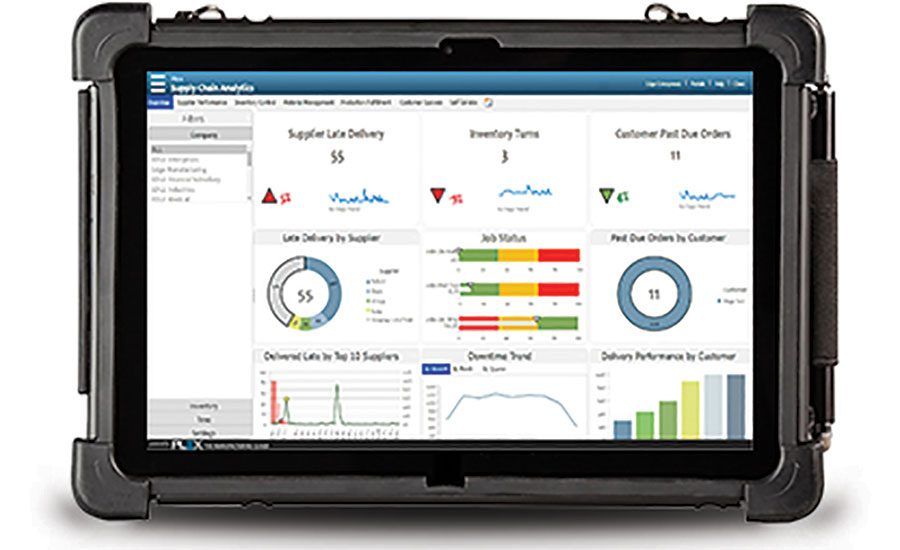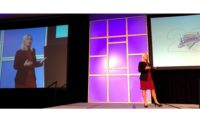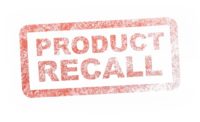Food Safety
How to manage recalls
New tools help processors manage recall processes

Tracking a recall back to the beginning of the supply chain can help limit the recall’s scope.
Photo courtesy of Getty Images

The Plex Manufacturing Cloud allows for rigorous tracking and tracing procedures. The system enforces that for every action—such as receiving, move to storage, move to work center, mix/bake/cut, inspect, ship, etc.—there is a transaction in the Plex Cloud. This creates a digital trail for every item, so if there is ever an issue, it can be traced to identify precisely who did what and when on which work center.
Photo courtesy of Plex

Undeclared allergens are the leading cause of recalls. Schneider Electric’s new system pairs software with cameras on the line to do 100 percent label checks to help ensure the right product is in the right packaging, reducing the risk of recalls.
Photo courtesy of Getty Images



More than 200 million eggs. About 135,000 pounds of Salisbury steak contaminated with bone. The romaine lettuce recalls of April 2018.
It’s been a rough year for food recalls, and there are still another six months to go.
Specifically, Rose Acre Farms recalled more than 200 million eggs after they were identified as the possible source of a Salmonella outbreak. Conagra Brands, Inc. recalled about 135,000 pounds of Salisbury steak products possibly contaminated with bone. And the CDC warned consumers to avoid all types of romaine lettuce after the food was linked to an E. coli outbreak. And those were just the highlights.
In fact, a recent report from the US Economic Research Service (ERS) showed that food product recall events increased by an average of 20 events a year from 2004 through 2013.
The good news is that it’s not because food has gotten riskier. Rather, an increasingly complex food supply system, technological improvements in health risk detection, increased regulatory oversight and enforcement, and the passing of two major food policy laws (FALCPA and FSMA) may have all contributed to the significant rise in food recalls.
Jordan Anderson, product marketing specialist at PAR Technology, says FSMA means that when the inevitable occurs, and an outbreak is reported, the following steps will be taken to aid the containment process:
- Mandatory recall: If a company fails to comply with an FDA-ordered recall, FSMA grants FDA power to recall that company’s unsafe products.
- Expanded administrative detention: This term describes the procedure enabling FDA to prevent suspect foods from being shipped. The new law grants the agency more flexibility when it comes to this sensitive issue.
- Suspension of registration: If it is determined a specific facility is producing food that poses an imminent threat to the public’s health, FSMA allows for the suspended registration and production of that facility until it is deemed safe.
But if it’s the risk of recalls that keep food and beverage processors up at night, then it’s a good recall management system that helps them get some sleep.
What should a good recall management system include?
Jordan Anderson, product marketing specialist at PAR Technology, lists the key features of an effective recall management system:
Temperature verification:
Does the system support an IR temperature capability for spot checking product temperatures upon arrival and departure?
Measurement location:
Does the system support RFID tags to electronically track travel paths or record temperatures?
Photo documentation:
Does the system provide photographic proof of task completion?
Barcode scanning:
Does the system provide barcode scanning capability for traceability requirements and incoming documentation of food goods?
Data security:
Does the supplier maintain the appropriate procedures to prevent the unauthorized access to stored customer data?
Certifications:
Does the supplier maintain the appropriate agency certifications per country for EMC, electrical safety, wireless, food safety, etc.?
That’s where companies like AVEVA, formerly Schneider Electric Software, come in. The company allows processors to complete product genealogy, which provides full details of which materials were used where, what equipment was employed, who did what, the relevant process and product quality settings and the results for each production, packaging and labeling step, as well as what unplanned events occurred and what corrective actions were performed.
During a recall, this genealogy gives processors all this information and data (in execution context) to quickly determine the root cause. They can determine which material, ingredient or equipment contaminated the product and which products are similarly affected, enabling them to quickly take corrective action and limit the impact of a recall.
“Companies used to do this paper-wise, and it would literally take hours. Once you digitize it, you can do it in minutes or seconds,” says Keith Chambers, director of operations and execution systems at AVEVA, operations management, soft web solution.
For example, the company recently implemented its system for Kwik Trip, and reduced the amount of time to track a recall from 10 hours to two or three minutes.
“There are a lot of cases where companies rely on paper records, [but] you actually don’t know whether the paper records got collected and stored correctly until you go to use them,” Chambers says. “With paper-based traceability systems, about one out of 10 times when they would try to do a back trace through paper, they would find that they couldn’t. They just had to expand [their search], because they didn’t know for sure [where the recall originated].”
Paper records also leave more room for human error.
“If someone is just putting data in a spreadsheet, they might enter 15, instead of 115,” Chambers says. “If you’re using spreadsheets to collect data, fine. At least you’re collecting data. But there’s no way of knowing that you actually collected the [correct] data. When you start to really look at more dedicated, more digitized systems, you can start to really enforce that the processes are carried out correctly and completely and ensure that the data is reasonable.”
Gerry Gray, senior director, product strategy, Plex Systems, says, indeed, the biggest challenge with recall management is having ready access to traceability information.
“Most companies track their products and ingredients using paper, but that makes it very difficult to track back to an event that may have led to a contamination or other quality failure,” he says. “This means that, in the event of an actual recall, team members could be tied up for hours to find the source.”
The Plex Manufacturing Cloud helps companies use rigorous tracking and tracing procedures.
“The system enforces that for every action—such as receiving, move to storage, move to work center, mix/bake/cut, inspect, ship, etc.— there is a transaction in Plex,” Gray says. “This creates a digital trail for every item, so if there is ever an issue, it can be traced to identify precisely who did what and when on which work center. For some manufacturers … this can extend all the way back to the seed one ingredient was grown from.”
Chambers says, to its credit, the food and beverage industry does seem to be moving in that direction.
“It’s kind of part of what’s driving through the industry right now,” he says. “Food manufacturers are recognizing that to be competitive, they need to be running at certain levels of efficiency that are very hard to reach without going digital. “
But he warns that going out and buying a bunch of fancy new food safety software isn’t enough.
“In general, it’s a mistake to think just going and buying software is going to fix anything,” he says. “Food safety and food safety programs are as much cultural as they are about technology. We can provide the technology, but it’s up to the company to ensure that they have appropriate processes and that the people are trained.”
He says any plant employee on the floor should be able to answer at any given time what he or she is doing and how it relates to food safety.
“We provide that technology, traceability, visibility, reporting, but that’s really just one piece of the puzzle when it comes to food safety and food safety programs,” he says. “The technology isn’t going to solve the problem. [But] it can speed it up and allow for less errors.”
Labeling
The ERS report also showed a significant increase in the number of recalls due to undeclared allergens. Specifically, from 2004 through 2013, undeclared allergens were a leading cause of food recalls, accounting for 27.4 percent of all recall events. FALCPA, which was put in place in 2006, requires the presence of all eight major food allergens (wheat, eggs, peanuts, milk, tree nuts, soybeans, fish and crustacean shellfish) to be properly labeled on food products. Thus, FALCPA likely played a major role in the dramatic increase in the number of undeclared allergen recalls.
“Mislabeling is a pretty easy mistake to make in a food facility,” Chambers says. “You’ve got stuff moving down the line, a couple hundred cans per minute. It’s going too fast for [the operators] to really keep track of what’s going on. So, it’s not uncommon that the labels are actually going onto the wrong product.”
And when it comes to mislabeling a product that contains allergens which have not been declared, it’s not just an inconvenience to the consumers who are deathly allergic to the ingredients.
“Not only is that a consumer satisfaction issue, but it’s also a food safety issue, because you could die,” Chambers says.
So, AVEVA has launched a new system that helps companies catch labeling issues sooner by combining their software with cameras set up along the line.
“Basically, the packages go by 100 or 200 per minute, [and] the camera systems are mounted, so they can see the labels,” Chambers says.
The systems read the lot codes and the best before information and positively verify those two things on 100 percent of the cans that go by. This entire system can be installed for between $100,000 and $200,000, depending on what needs to be done.
“They’re not super cheap, but compared to cost of recalls and safety issues, they’re obviously a pretty wise investment,” Chambers says.
And he insists that it’s just one part of a good recall management system.
“You don’t rely on a single thing,” he says. “This is the second layer of defense for food safety to help ensure the labels are correct.”
Temperature control
Another part of a good recall safety management system is monitoring temperature data. That’s where companies like PAR SureCheck come in, helping processors with recall management by digitizing food safety practices, while providing real-time business intelligence to provide actionable data.
“Product temperatures can be consistently monitored, and if an issue occurs, SureCheck will provide the user with proper corrective actions,” say PAR’s Anderson. “Intelligent checklists provided [by SureCheck] will guide employees and ensure they complete tasks the right way. While completing these, all information will be recorded [and] then stored in the cloud for impeccable recordkeeping and easy retrieval.” This ties back in with the idea that paper records just aren’t enough anymore.
“When documentation is done manually, it’s easy for errors to arise—mistakes you cannot afford. Paper records can deteriorate over time, or pen marks become illegible, especially in areas around liquids or freezers,” Anderson says. “With digital technology and your HACCP system, the compliance notes are preserved indefinitely. The monitoring forms are easily copied and specific fields [can be] exported to a central documentation report.”
And Anderson has some advice for any companies having trouble getting management buy-in for system upgrades.
“Presenting the potential damages of being linked to a foodborne outbreak is a great place to start,” he says. “It typically will open the eyes and slightly intimidate each audience member. After all, executives and board members do not like to hear ‘profit loss,’ ‘stock plunge’ and ‘tainted brand image.’”
For more information:
PAR Technology, www.partech.com
Plex Systems Manufacturing ERP, www.plex.com
AVEVA, www.aveva.com
Looking for a reprint of this article?
From high-res PDFs to custom plaques, order your copy today!









